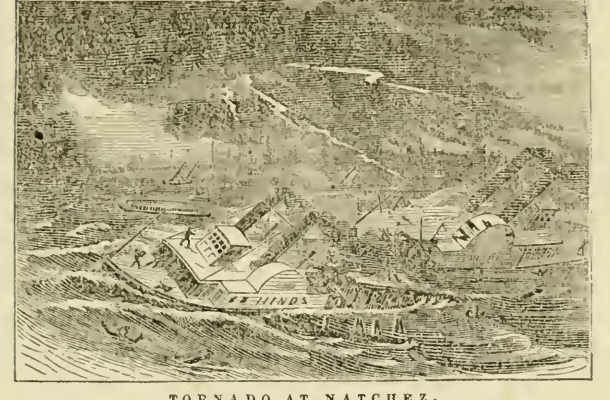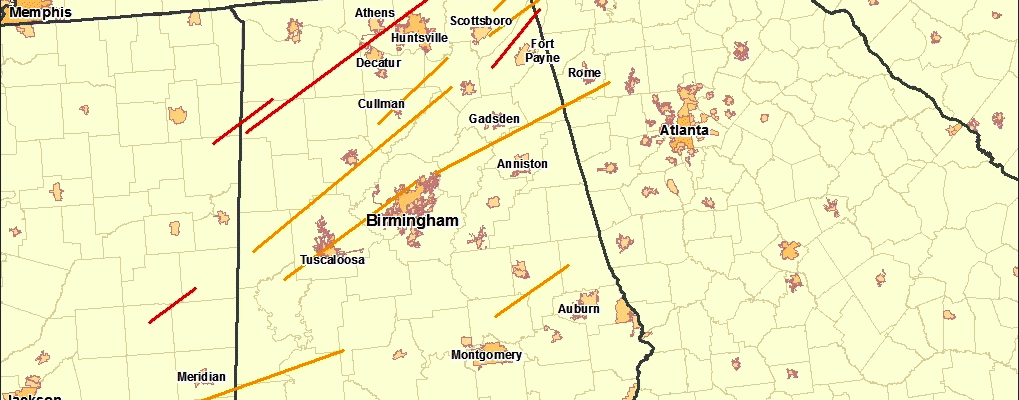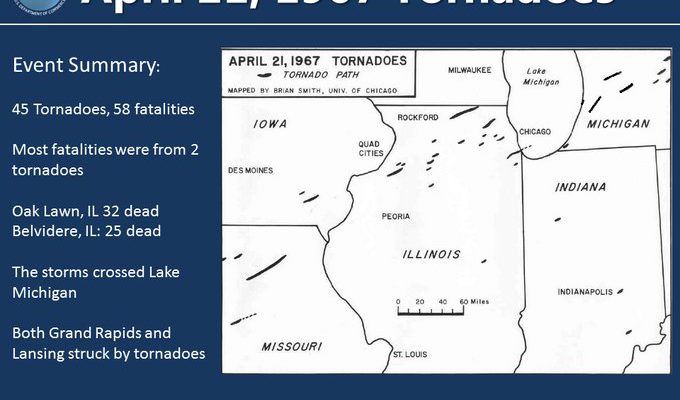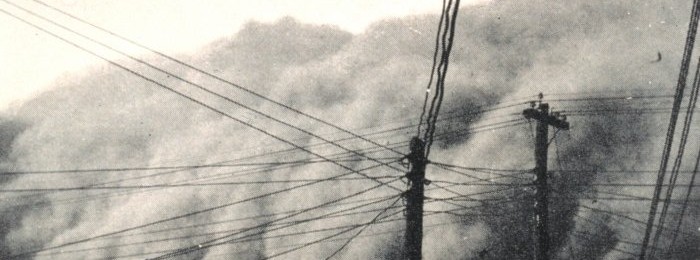History
-

The second deadliest tornado in history happened in Natchez MS on May 7, 1840. A large and powerful tornado went right through the center of town, flattening most of the buildings. But even worse was the damage on the Mississippi River, which was filled with boats, including 120 flatboats and a steam boat. Many bodies…
-

One of the earliest tornado videos on record was this short video clip from the deadly Warner Robins GA storm on April 30, 1953. According to This Date in Weather History on Facebook, “An F4 tornado with winds over 200 mph hit the Warner Robins, Georgia, and portions of Robins Air Force Base, killing 18…
-

Today is the sixth anniversary of one of the worst tornado outbreaks on record, rivalling the Super Outbreak of April 3-4, 1974. Many large and horrifically damaging tornadoes occurred from Mississippi to Tennessee, destroying homes and businesses and killing and injuring many. Here are some selected video remembrances of the storms. Weather Channel video: Anatomy…
-

The bright orange and pink clouds in Edvard Munch’s “The Scream” have long been thought to be a product of a volcanic eruption, most likely the very large eruption of Krakatoa in 1883. Volcanic eruptions shoot sulfuric acid droplets and ash high into the atmosphere, producing spectacular sunsets around the world that have been linked…
-

From This Day in Weather History on Facebook: April 25th, 1910 – Atlanta, Georgia was blanketed with 1.5 inches of snow while seeing their latest freeze ever with a morning low of 32°F. The high that day of 39°F was the second time ever that the high never got out of the 30s in April.…
Posted in: History -

Today is a big anniversary for me–it marks the 50th anniversary of the tornado that went two blocks from my house in Grand Rapids MI, kicking off my interest in studying the weather. The storms in Michigan were overshadowed by the Belvidere IL tornado and others that also happened that day. You can read more…
-

During the Dust Bowl era, there were a number of storms that made history for the size and length of the storm and the amount of soil they moved. Chief among those is the Black Sunday dust storm of 1935, which was, by some accounts, 1000 miles long. You can read about this storm in…
Posted in: History